Symbols on cosmetic labels communicate a variety of things about the product inside such as its expiration date, volume/weight, container recyclability, and more. Besides the legal requirement for manufacturers to label their cosmetic products properly, consumers are paying far more attention to product labels as they become more conscientious of what they’re putting in and on their body. Below are symbols that can be seen on cosmetic labels in the United States and European Union, and what they mean.
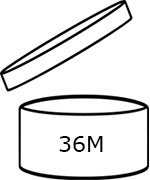 Period After Opening (PAO): The open jar symbol tells you how long the product will stay good after it’s been opened in months and/or years. If the time period is given in months, it can be represented by a number followed by the word “month(s)” or by “M” inside or next to the jar symbol. The U.S. Food and Drug Administration (FDA) does not require manufacturers to print expiration dates on cosmetic labels, however, the European Union requires expiration dating but only for products whose “minimum durability” is more than 30 months. E.U. exemptions on expiration dating include products that don’t open (i.e. sealed packaging or sprays), single-use products, and products not at risk of deterioration.
Period After Opening (PAO): The open jar symbol tells you how long the product will stay good after it’s been opened in months and/or years. If the time period is given in months, it can be represented by a number followed by the word “month(s)” or by “M” inside or next to the jar symbol. The U.S. Food and Drug Administration (FDA) does not require manufacturers to print expiration dates on cosmetic labels, however, the European Union requires expiration dating but only for products whose “minimum durability” is more than 30 months. E.U. exemptions on expiration dating include products that don’t open (i.e. sealed packaging or sprays), single-use products, and products not at risk of deterioration.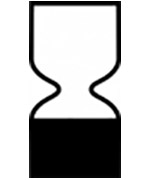
“Best Before End Of” Date (BBE): If the product has a lifespan of less than 30 months, it must have a BBE date on the label. The hourglass symbol can be followed by the date, or the words “Best before end of”, which can be abbreviated to “BBE” or “Exp.” Like the PAO statement, BBE is only required in the European Union.

E- Mark: A lowercase “e” is used in the European Union to state the net quantity of a product at the time it’s filled into the packaging. For cosmetics, it’s shown in grams (g) or milliliters (ml) for solids or liquids respectively. Products with a net quantity of less than 5g or 5ml, single-use packets, and free samples aren’t required to have the e-mark.

Open Flame: The “flammable” symbol is a warning to keep flames or high heat away from the product at all times because it’s flammable. Cosmetic products like hairspray, deodorant, nail polish, and nail polish remover are typically flammable due to certain ingredients like alcohol and propellant gas.

Refer to Insert: A hand pointing at a book means there is information or instructions contained on a leaflet, booklet, or another insert which can’t be listed on the primary label. The information can be things like an ingredients list, usage instructions, or warnings. This symbol is particularly useful for smaller cosmetic products since they don’t have enough space on their container to list all the product’s information.
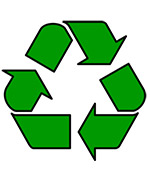
Recycling Arrows Triangle: Also known as a “Mobius loop,” this symbol indicates that the container is recyclable. There are variations of the symbol to communicate information about the container, for example, if the container is made from recycled material, it will have the symbol inside a solid circle. If the triangle symbol is inside a circle and has a percentage inside the symbol or next to it, this indicates the container is made from a percentage of recycled material. If there’s a number inside the triangle and letter below, this tells the particular resin used in making the container’s plastic to help the recycling process.

Green Dot: This symbol is used in Europe to show that the manufacturer pays a recovery and recycling organization to oversee ecologically responsible management of their packaging waste. All companies in Europe and the UK have a legal obligation to recycle and recover packaging waste which is typically done by outsourcing to a specialist company.
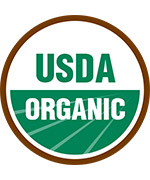
USDA Organic Seal: The seal indicates that at least 95% of the product’s ingredients are organic. Manufacturers have to be certified by the United States Department of Agriculture (USDA) to be legally able to use the seal on product labels and packaging. Check out our article Beauty Product Labeling Trends to Know for more information on popular beauty claims, like organic and natural.
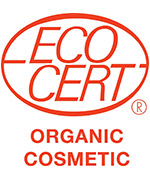
Ecocert: The Ecocert Organic symbol is from a nongovernmental certification program that evaluates the organic contents of products. Labels with the Ecocert Organic symbol signify that the product has at least 95% plant-based ingredients, and at least 10% of all its ingredients by weight are organic. If the product has an Ecocert Natural symbol, that means at least 50% of the ingredients are plant-based, and at least 5% of all its ingredients by weight are organic. There are Ecocert offices in 24 countries and service is provided to more than 120 countries.
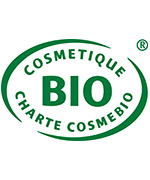
COSMEBIO: The French organization, COSMEBIO, has a couple of symbols for cosmetic labels depending on the product’s certification. The BIO symbol stands for “biologique” (the French word for organic) and signifies that the product contains at least 95% natural ingredients and that organic farming account for at least 10% of the total products and 95% of the plant ingredients. The ECO symbol stands for “ecologique” (the French word for natural) and tells consumers that the product contains at least 95% natural ingredients and that organic farming accounted for at least 5% of the total product and 50% of the plant ingredients.
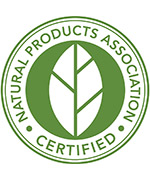
Natural Standard Seal: Although the “natural” claim isn’t regulated by the FDA, there are third-party certifications available for natural cosmetic manufacturers. The Natural Products Association (NPA) is a U.S. nonprofit organization dedicated to the natural products industry covering foods, dietary supplements, and health/beauty aids. The NPA developed the Natural Standard and Certification for Personal Care Products, a set of guidelines and certification process that dictates whether a product can be deemed truly “natural.”

The Leaping Bunny: The leaping bunny symbol is an internationally recognized logo that signifies that the manufacturer does not perform any animal testing and conforms to the standards set by the Coalition for Consumer Information on Cosmetics’ (CCIC) Leaping Bunny Program.

PETA Cruelty-Free Bunny: The “cruelty-free” bunny symbol is from the People for the Ethical Treatment of Animals’ (PETA) certification program to indicate that the manufacturer and its supplier does no animal testing at any point in the product’s lifecycle. There is also a “cruelty-free and vegan” symbol which signifies that the manufacturer also uses vegan ingredients in their products. In 2015, PETA rolled out new logos (pictured right) for their certification program, however, companies can still use the original logos for more design options.
Whatever the cosmetic product, it’s essential that the manufacturer labels the product with accurate information that is easy to read or scan. Symbols on cosmetic labels not only can help consumers better understand the product they’re about to buy or use, it can also give them more information about the manufacturer like it’s recycling practices or treatment of animals. If you’re a cosmetic company who needs to update their packaging with new labels, we can help you get started on that today.
Have questions about cosmetic labels? Our dedicated customer service team would be happy to help! Call us at 1-800-475-2235 or email sales@consolidatedlabel.com.


